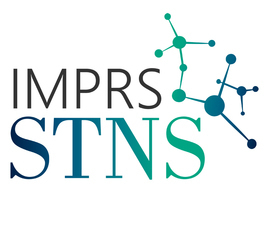Black swans in topological antiferromagnetic spintronics
Tutorial
- Datum: 25.09.2019
- Uhrzeit: 16:00 - 18:00
- Vortragende(r): Libor Smejkal
- INSPIRE Group, JGU Mainz; Departments of Spintronics and Nanoelectronics, Czech Academy of Sciences Prague
- Ort: Max-Planck-Institut für Mikrostrukturphysik, Weinberg 2, 06120 Halle (Saale)
- Raum: Lecture Hall, B.1.11
- Gastgeber: IMPRS-STNS

Recent discoveries of the interplay among novel topological phases of matter and spintronics effects in antiferromagnets established a field of topological antiferromagnetic spintronics [1,2]. In this tutorial, we will provide simple illustrative examples how the interdisciplinary efforts in material, computational and theoretical physics help to identify black swans [3], highly unanticipated spintronics effects with a remarkable magnitude owing to the underlying topological properties.
In the first part of the talk, we will classify existing topological quasiparticle antiferromagnets and their compatibilities with spintronics effects [4]. In the second part of the talk, we will focus on two exemplary material realizations of topological antiferromagnets. We will introduce (i) Dirac fermions antiferromagnets and signatures recently observed in anisotropic magnetoresistance experiments [5], and (ii) sizable spontaneous Hall response in collinear antiferromagnets, systems anticipated for over one century to be prohibited from any spontaneous Hall effects [6]. In the last part of the talk, we will discuss the possible application of these materials and associated risk factors in material development. Topological antiferromagnets hold the promise for reinventing neuromorphic computing elements or even dark matter detectors [7].
[1] Libor Šmejkal and Tomáš Jungwirth, Symmetry and topology in antiferromagnetic spintronics, Topology in Magnetism, Eds. J. Zang, V. Cros, A. Hoffmann,
Springer International Publishing (2018)
[2] Libor Šmejkal, Y. Mokrousov, B. Yan, and A. H. MacDonald, Nature Physics, 14, 242–251 (2018)
[3] Taleb, Nassim Nicholas (2010) [2007], The Black Swan: the impact of the highly improbable (2nd ed.), London: Penguin
[4] Libor Šmejkal, J. Železný, J. Sinova, and T. Jungwirth, Phys. Rev. Lett. 118 , 106402 (2017)
[5] S. Yu. Bodnar, Libor Šmejkal, I. Turek, T. Jungwirth, O. Gomonay, J. Sinova, A. A. Sapozhnik, H.-J. Elmers, M. Kläui & M. Jourdan, Nature Communications 9, 348(2018)
[6] Libor Šmejkal, Rafael Gonzalez-Hernandez, Tomas Jungwirth, Jairo Sinova, arXiv:1901.00445 (2019)
[7] David J. E. Marsh, Kin Chung Fong, Erik W. Lentz, Libor Šmejkal, and Mazhar N. Ali, Phys. Rev. Lett. 123, 121601 (2019)